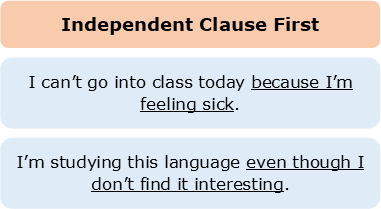Which sentence structures in English are complex?

This is the second of three chapters about Compound-Complex Sentences. To complete this reader, read each chapter carefully and then unlock and complete our materials to check your understanding.
– Focus specifically on complex sentences in academic English
– Provide three useful rules for determining complex sentences
– Include examples of each rule to help guide the reader
Chapter 2

While simple and compound sentences are certainly useful when writing academically, if you wish to make your writing more dynamic and engaging, you’ll need to use a variety of complex sentence structures too. To help you with recognising and using complex sentences, this second chapter provides three rules that students should understand and follow carefully. Should you need extra assistance with understanding any of the sentence elements discussed below, you may wish to first visit our short reader on simple and compound sentences.
Rule 1: Combine Independent with Dependent Clauses
Unlike simple and compound sentences, complex sentences require both one independent clause and one dependent clause to be considered grammatical, such as in the following examples. In both of these sentences, the independent clauses have been underlined:


We can tell that these two example complex sentences are composed of a combination of independent and dependent clauses because (1) all sentence structures require at least one independent clause, and (2) these clauses have been joined with the bolded subordinate conjunctions ‘even though’ and ‘because’. Such subordinating conjunctions tend to be used to introduce dependent clauses, which cannot stand alone as complete thoughts or sentences.
Rule 2: Expect a Variety of Dependent Clauses
While it may seem easy enough to separate the independent from the dependent clauses in the previous examples, there’s so much variation in the types of dependent clause available that this isn’t always the case. Generally speaking, dependent clauses may conjoin with independent clauses by using relative pronouns such as ‘who’ or ‘which’, they may demonstrate the time or sequence of a clause by using subordinate conjunctions such as ‘since’ or ‘while’, or they may show the causal relationship between clauses by using conjunctions such as ‘because’ and ‘if’. The four possible dependent-clause types have been provided for you in bold below to help with recognising such sentence structures.

Notice that in the non-finite clause example ‘to visit his friends’, this dependent clause seems to break the first rule of being a clause in that it doesn’t have both a subject and a verb but only the verb ‘visit’. This is because non-finite clauses form an exception to this rule in which the subject (in this case ‘James’) is considered to be contained within the superordinating independent clause.
Rule 3: Punctuate Complex Sentences Correctly
Finally, you’ve probably also noticed variation in how the previous example complex sentences are punctuated and ordered. Note that it’s quite possible to place the dependent or independent clause at the beginning or end of the sentence depending on the writer’s preference, particularly with adverbial clauses:


However, when placing the dependent clause first, writer’s must also always provide a comma (,) between the dependent and the independent clause to join them correctly. A comma is not needed however – and in fact the use of one would be ungrammatical – when the independent clause is at the front of the complex sentence.
Having now explored the rules and forms of complex sentences, students should try completing Chapter 2’s activities to check their comprehension. It might then be a good idea to consider moving on to our final chapter of this reader, focusing specifically on compound-complex sentence structures.
Downloadables
Once you’ve completed all three chapters in this short reader about Compound-Complex Sentences, you might then wish to download our Chapter Worksheets to check your progress or print for your students. These professional PDF worksheets can be easily accessed for only a few Academic Marks.
Chapter 1 explores the topic: Why are sentence structures important in EAP? Our Chapter 1 Worksheet (containing guidance, activities and answer keys) can be accessed here at the click of a button.
Chapter 2 explores the topic: Which sentence structures in English are complex? Our Chapter 2 Worksheet (containing guidance, activities and answer keys) can be accessed here at the click of a button.
Chapter 3 explores the topic: How can I write compound-complex sentences? Our Chapter 3 Worksheet (containing guidance, activities and answer keys) can be accessed here at the click of a button.
To save yourself 2 Marks, click on the button below to gain unlimited access to all of our Compound-Complex Sentences Chapter Worksheets. This All-in-1 Pack includes every chapter, activity and answer key related to this topic in one handy and professional PDF.
Collect Academic Marks
-
100 Marks for joining
-
25 Marks for daily e-learning
-
100-200 for feedback/testimonials
-
100-500 for referring your colleages/friends